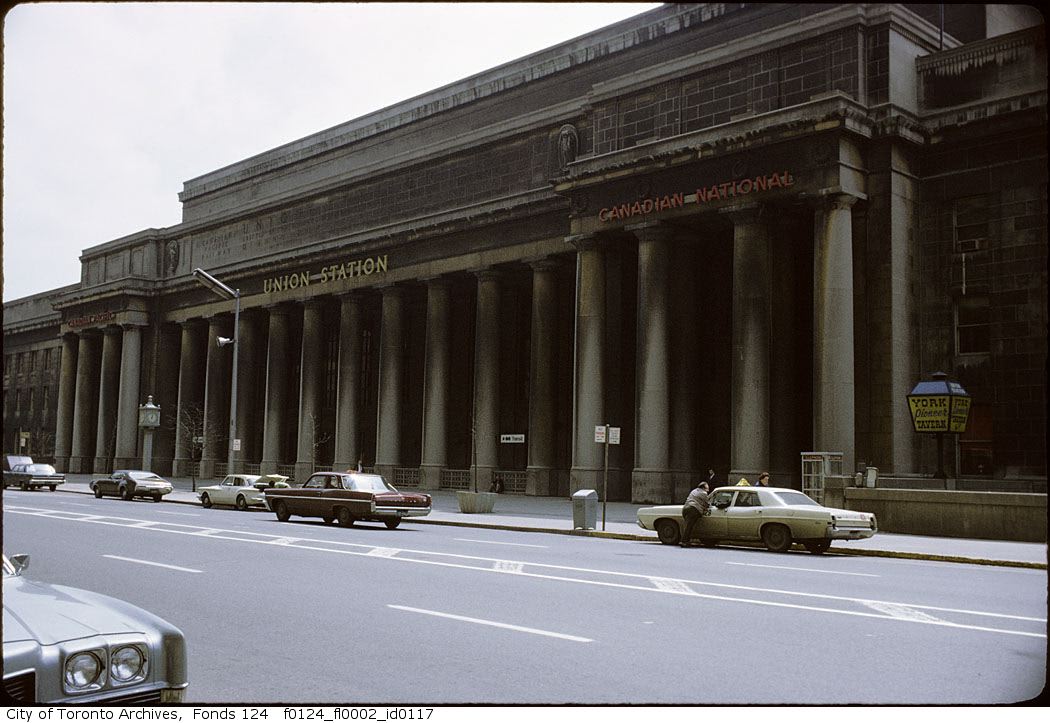Share
1914–2024: A century of expansion at Union Station
Look back at Union Station's transformation through history.
Nov 1, 2024
Since its opening, Toronto’s Union Station has continued to grow to meet the evolving transit needs of the region.
Recognized as Canada’s busiest transportation hub, Union Station sees more passengers daily than Pearson International Airport. To accommodate rising passenger traffic, the station has gone through several periods of expansion in the past century to improve capacity and provide more services.
Travel back in time to learn how the station grew over the years and is still changing to better serve passengers in the future.
1914–1919
The current Union Station was built to replace an older facility located west of York Street. Construction began in 1914 but was delayed for several years due to a shortage of construction materials and workers amid the First World War.
1927–1930
Union Station’s main building was finished and opened to the public by Prince Edward, Prince of Wales, in August 1927. The new viaduct, concourse, and train shed were still under construction at this time and were not fully completed until 1930.
1949–1969
The first major change to the current Union Station took place in 1949 when the Toronto Transit Commission broke ground on the Union subway station under Front Street. The subway station officially opened in 1954.
GO Transit began operating as Canada’s first regional public transit system in 1967, offering service on a single train line along Lake Ontario’s shoreline. The original GO train service carried 2.5 million passengers in its first year of operation. Today, our trains and buses carry 70 million riders annually.
1970–1999
During this period, train services were changing to match increased passenger levels.
Via Rail was established in 1977 to provide inter-city train services. The GO Concourse was built in 1979 to boost regional rail service, as well as a tunnel connecting the railway station and the subway portion of Union. Finally, in 1990, an underground streetcar loop was added.
Union Station was by now Canada’s most opulent railway station, and people started to take notice. The station was designated as a National Historic Site of Canada in 1975, a Heritage Railway Station in 1989, and inducted into the North America Railway Hall of Fame in 1999.
2000–2021
The Union Station GO Bus Terminal opened in 2003 to meet an increase in demand for bus services. This provided a safe, dedicated space to board a GO bus. Previously, passengers had to board in front of the Great Hall on Front Street.
After more than 70 years of operations, the City of Toronto announced a multi-year revitalization of Union Station in 2006. The project concluded in 2021 and brought about the following changes to better serve passengers:
- More space – the York Concourse opened in 2015, and the revitalized Bay Concourse opened in 2021. These expansions more than tripled the capacity of GO Concourses.
- More shopping – the project added approximately 14,900 square metres of new retail space.
- Better connections– access to and from the PATH was extended into the Bay Concourse and its adjoining retail area.
- Better amenities – the VIA Concourse and Panorama Lounge was fully renovated.
2022–Present
Union Station continues to undergo much needed modernization to meet transit needs now, and into the future. As part of GO Expansion, current work at Union Station will help deliver two-way, all-day rail service every 15 minutes or better along core segments of the GO network.
Once upgrades are complete, Union Station will be able to accommodate up to 80 trains per hour – four times current levels. GO Transit customers will also enjoy a new south concourse that will seamlessly connect Bay and York Streets, provide additional access points to and from the platform levels, and maintain connections into the Bay, York, and VIA concourses, Union Square and Scotiabank Arena.
With these improvements, GO will improve service for the thousands of passengers who move through Union Station each day providing faster, safer, and more accessible transit.
For more information on the Union Station Enhancement Project, please visit metrolinx.com/unionstation and follow @GOExpansion on X and Instagram.
by Brooklyn Neustaeter Capital Communications senior advisor
